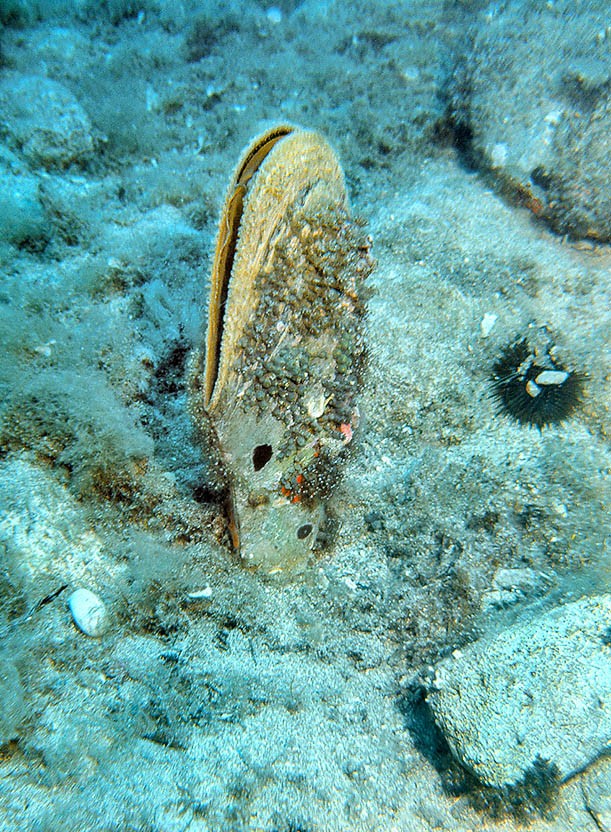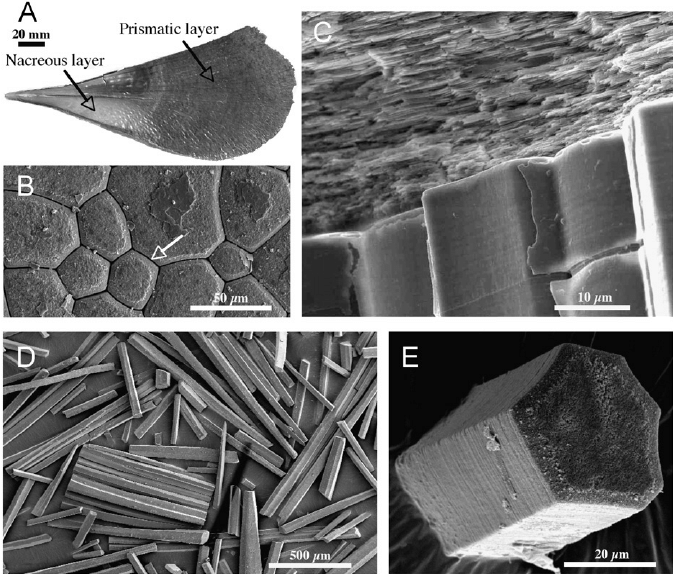Administration of the project
Unraveling the Secret Behind Nature’s Strongest Material
Nacre, which is also known as mother-of-pearl, holds the reputation as the toughest material found in nature. Nacre is a composite organic-inorganic material produced as an inner shell layer in some mollusks. It is also the material of which pearls are made.
Pinna Nobilis, or the fan mussel, is one mollusk whose inner shell is built out of nacre. It is a large species of the Mediterranean clam, living offshore in the Mediterranean Sea, and found anywhere from 0.5 to 60 meters deep. The shell of the Pinna Nobilis is typically 30 to 50 cm long but can reach a length of 120 cm. The Pinna Nobilis attaches itself to rocks and is often found buried beneath fine sand or mud. The inside of its shell is lined with mother-of-pearl or nacre.

Nacre’s noteworthy characteristics include a unique combination of resilience and hardness – a combination which scientists, to date, have not been able to replicate. While researchers understand the basics of the nacre’s design, they cannot duplicate the engineering ability of the mollusks. This is truly amazing when you consider the fact that the mollusk is not known for its intelligence. Robert Hoven, a University of Michigan assistant professor of materials science and engineering discusses the fact that human beings are capable of creating tougher materials within non-natural environments involving pressure and heat. If researchers could replicate the processes used by mollusks and incorporate it with the methods currently employed, it could to an entirely new type of material, with an endless possibility of applications.
Nacre is composed of aragonite, which is a carbonate mineral and one of the three most common naturally occurring forms of calcium carbonate. The formation of aragonite involves both biological and physical processes. The aragonite takes on a brick-like form in the nacre, and those bricks are held together with organic material, similar to mortar. However, this does not completely explain the nacre’s immense strength.
In an effort to unravel the secret, researchers employed minute piezo-electric micro-indenters to exert force on the shells of the Pinna Nobilis. Watching through an electron microscope the researchers carefully observed the results. They discovered that the bricks of aragonite are not really bricks but are shaped more like multisided tablets. The tiny tablets sit separately lined up in layers with a thin layer of organic material acting like the mortar or a cushion. However, when the micro-indenters exerted force on the shell the organic material was pushed aside and the aragonite tablets actually locked together to form one solid surface. When the micro-indenters stopped exerting a force on the shell, the tablets and inorganic material returned to their original positions.
What is truly amazing is that the structure does not lose any of its resilience or strength throughout the process. No manmade materials have ever come anywhere near meeting this standard. While some materials remain resistant, they lose some of their strength after each impact.
During the study, researchers also determined that when a crack started to form within the nacre, it was contained within a single layer, which prevented the crack from spreading and permanently hurting the mollusk’s shell.
Researchers involved in the project included Hovden, Jiseok Gim, a University of Michigan materials science graduate research assistant, and other researchers from Macquarie University, Universite de Bourgogne Franche-Comte, and Friedrich-Alexander-University Erlangen-Nurnberg.
Researchers hope to one day be able to recreate the engineering found in nacre to develop stronger and lighter composite surfaces beyond what is possible today.
Further details: Nanoscale deformation mechanics reveal resilience in nacre of Pinna nobilis shell, https://doi.org/10.1038/s41467-019-12743-z.



Be the first to comment